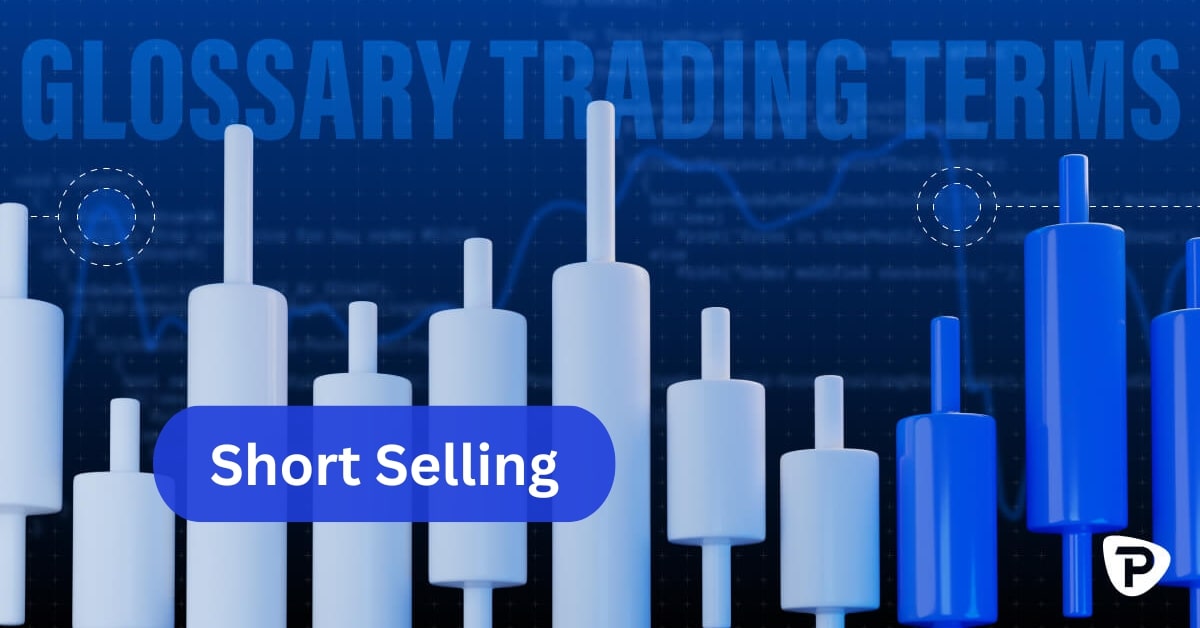Short selling in trading
Short selling is a strategy where traders borrow shares and sell them in the open market, aiming to repurchase them later at a lower price. The goal is to profit from a decline in the share’s value.

For example, if a stock is sold short at $50 and later bought back at $40, the trader earns the $10 difference per share. However, short selling carries significant risks, as losses can be unlimited if the share price rises instead of falling. It is commonly used in speculative trading or as a hedge against other investments.
Key characteristics
Short selling is a trading strategy with distinct features that carry unique risks and opportunities:
Advantages
- Profit from declining markets: Short selling allows traders to potentially earn profits when share prices fall, offering an opportunity to capitalise on downward trends.
- Portfolio hedging: Traders can use short selling to offset potential losses in their investment portfolio, by going short on markets they expect to temporarily fall.
- Expressing bearish views: Short selling allows traders to act on negative market expectations without owning the stock, enabling strategic market positioning.
- Market liquidity: Short selling can help improve market liquidity by adding more trading activity, making it easier to buy and sell assets and helping prices reflect true value.
Risks
- Unlimited loss potential: Short sellers face theoretically infinite losses, as share prices can rise indefinitely. This contrasts with traditional buying, where losses are limited to the initial investment.
- Short squeeze risk: Rapid buying activity by other traders can trigger a short squeeze, forcing short sellers to close their positions at significantly higher prices and amplifying losses.
- Margin risk: Because short selling involves borrowing, it normally requires a margin account. These offer financial leverage, meaning a small deposit can control a larger position. If the share price rises significantly, you could potentially lose more than your initial deposit and be required to add more funds to maintain the position (known as a margin call).
- Market volatility: Short selling is particularly sensitive to sudden market swings, which can lead to rapid and unexpected losses. If the price of the asset rises instead of falling, there’s no cap on how high it can go, meaning losses can quickly exceed the initial investment unless you employ risk-management tools such as stop-losses.
Example:
A trader believes Company X's shares, currently priced at $100, will drop to $80. They borrow shares and sell them at $100. If the share falls to $80, the trader buys them back, returns them to the lender and secures a $20 profit per share. However, if the price rises instead, the trader must buy back the shares at a higher price, facing potentially unlimited losses – a risk unique to short selling.
The material provided here has not been prepared in accordance with legal requirements designed to promote the independence of investment research and as such is considered to be a marketing communication. Whilst it is not subject to any prohibition on dealing ahead of the dissemination of investment research we will not seek to take any advantage before providing it to our clients.
Pepperstone doesn’t represent that the material provided here is accurate, current or complete, and therefore shouldn’t be relied upon as such. The information, whether from a third party or not, isn’t to be considered as a recommendation; or an offer to buy or sell; or the solicitation of an offer to buy or sell any security, financial product or instrument; or to participate in any particular trading strategy. It does not take into account readers’ financial situation or investment objectives. We advise any readers of this content to seek their own advice. Without the approval of Pepperstone, reproduction or redistribution of this information isn’t permitted.